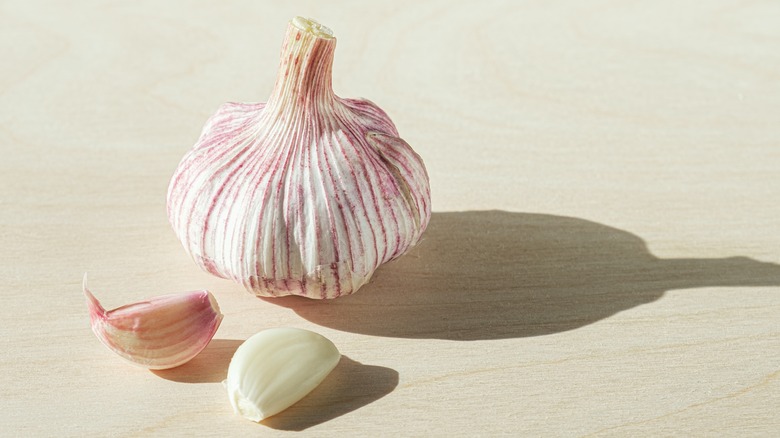Jacques Pépin's Palm Strike Is The Best Way To Separate Garlic Cloves
One cannot deny the convenience of a jar of minced garlic. However, there are a host of additives and preservatives found in these jarred options that can take away from the garlic's natural flavor and be off-putting to some consumers. Maintaining a stock of fresh heads of garlic in your kitchen is the best way to provide your dishes with that perfect, pungent, garlicky taste. But when a recipe calls for two cloves of garlic and you have a whole head to separate, you may be wondering how best to go about it. Enter the legendary Jacques Pépin.
Pépin has built his career around teaching Americans that good food needn't be expensive, time-consuming to prepare or taste boring. Drawing from a life filled with many culinary experiences, the celebrity chef is always ready to demonstrate the precise, common sense techniques that he believes all cooks must know in order to be successful in the kitchen. One such technique is his method for separating garlic cloves. Forgoing any fancy knife work, Pépin's method for separating garlic cloves is simple. All you need are your hands, a cutting board, and a well-practiced palm strike.
Palm strike technique
The garlic palm strike sounds like a move straight out of a martial arts movie and in some ways, it actually is. For Pépin, there's no easier way to separate garlic. First, using his thumbs, he peels away some of the outer, papery skin to expose the cloves. He then places the head down on its side and strikes it deftly with the palm of his dominant hand. The individual cloves all scatter across the cutting board. It is a simple, effective movement that takes no time to put into practice.
Indeed, once you've separated your first clove and followed Pépin's other techniques for peeling, crushing, and chopping, you'll likely never think of buying jarred garlic again. Any unused cloves whose skin remains intact will keep for about three weeks. Whole heads can last upwards of six months, provided you keep them at room temperature in a dark, well-ventilated place. Adding these skills to your repertoire as a chef will certainly serve you in the meals ahead.

